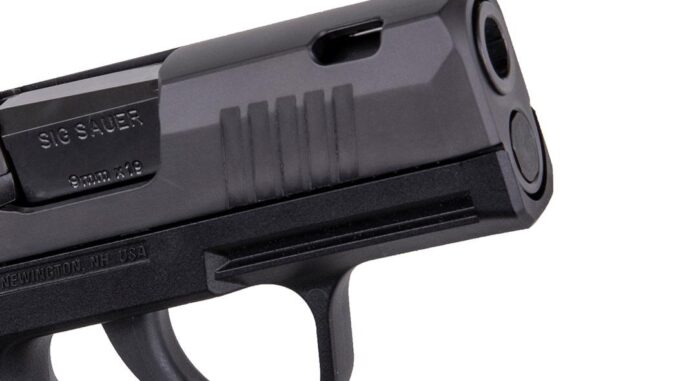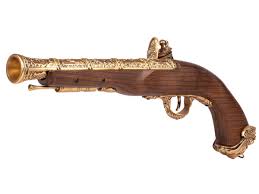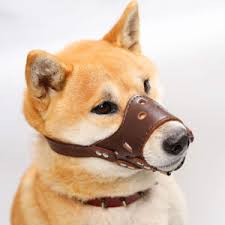
Muzzling occurs when the shooter points the end of the barrel of a gun or rifle in an unsafe direction usually at another shooter. It is never acceptable to muzzle a person regardless of the state the gun is in, loaded or unloaded, safety on, magazine removed, or any other circumstance. Muzzling can occur anywhere but is commonly seen at a range. Even some of the most experienced shooters will inadvertently point their guns in an unsafe direction but are quick to correct their mistakes.
Why is it called Muzzling?

Ask any self-respecting firearm instructor where the muzzle of a gun is located, and they will proudly explain that it’s the “Business” end of the barrel – where the projectile exits.
OK, fair enough. Then ask them why it’s called a “muzzle” and watch as they stumble for the answer.
The word “muzzle” comes from the Latin word “morsus” which, in its simplest form means “bite”.1 In Old French ‘musel’ and in Latin ‘musellum’ means nose or snout. As far back as the 15th century, the use of the word muzzle has been used to refer to the extended section of an animal’s head. How it became associated with the open end of the barrel appears to be unknown.
A tool called a muzzle is used to prevent a dog from biting or causing harm to those around him. The end of a barrel is referred to as a muzzle where the projectile leaving causes a loud noise and, maybe, cause damage. Could this be the connection?

To be fair, no one really knows how the end of the barrel acquired the name muzzle; there’s no documented historical reference in which we can locate it. Some believe it comes from early “muzzle-loading” rifles and pistols where the projectile is loaded, but that still does not explain how the open end of the barrel acquired the name.
There are lots of definitions for a muzzle. If you simply query “muzzle” you get dozens of responses focused on an animal’s snout. You have to go out of your way to find a muzzle defined as the end of a barrel. Your search query must include something like: “barrel muzzle”, “end of muzzle”, and “Where is the muzzle on a gun”. After defining your search parameters more specifically you will end up with something like the below:
“The muzzle is the front end of a barrel
from which the projectile will exit.”2
Common Muzzle Mistakes
- Racking the Slide: Pointing at a fellow shooter when racking the slide. This occurs when the shooter places the magazine into the gun and then racks the first round into the chamber. Many students are taught to rack the slide by holding the gun in one hand and using the other to press the slide towards the strong hand. While there is nothing wrong with this method the problem becomes apparent when the student flags the fellow shooter next to them.
- Solution: Train in the classroom before going to the range. Using “snap caps” to load the firearm while being aware of where the muzzle is pointing.
- Make it a habit to turn your body perpendicular to the range. In other words with your support shoulder pointed downrange. When the firearm is racked, the muzzle is pointed downrange in a safe direction.
- The other solution is to train yourself to consciously point the muzzle downrange and pull the slide rearward, towards your body, as opposed to the side-to-side method of racking the gun.
- Loading the Magazine: Basically follows is the same as racking the slide. Students turn the firearms at a 30-90 degree angle as they insert the magazine. On rare, very rare occasions the slide will close abruptly, loading a cartridge in the chamber followed by the striker or hammer striking the cartridge during the process. Shooters should train in the correct manner for loading the magazine in the classroom before heading to the range in case one of these rare scenarios present itself.
- When Excited: New shooters often get excited when they hit the paper. The shooter will tend to turn back to express their enthusiasm to a friend. During the turning process, the shooter forgets they have a gun in their hand that travels with their arm as they turn.
- Solution: When a new shooter is on the firing line, allow them to shoot at the target with only one cartridge loaded. Observe how the shooter is behaving on consequent shots until you are comfortable they will keep their gun pointed downrange.
- At the “Ready” table or “Firing Line”: Loading, reloading, picking up, and setting down the firearm are all potential occurrences where the firearm could end up pointing in the wrong direction.
- Solution: Train in the classroom using snap caps. Have students pick up their firearms, observe their finger is off the trigger, and reinforce muzzle discipline. This is not a one-time exercise. Training should continue for at least 30 minutes, reinforcing the rule while also issuing common range commands: “Make Ready”, “Fire”, “Clear and Show Safe”, “Bench the Firearm”, “Cease Fire” and so forth.
- Mechanical Safeties: Students will often become sloppy once their safety has been engaged, feeling the extra due diligence of muzzle discipline is not needed. Reinforce to the student that safeties are mechanical devices that can fail. Having the safety engaged does not allow the student to break such a fundamental rule.
- Negligent Discharges: There is no such thing as a “negligent” discharge. For the firearm to function the trigger must be pressed, period. By following the “finger off the trigger until ready to shoot” rule, the gun will never discharge unless there’s a major mechanical failure. Following the rule of “keeping the gun pointed in a safe direction” negates all discharges from destroying something that is not intended.
Training Tools, Solutions, Best Practice
- Uncasing the Firearm: Students must be aware of where the muzzle is pointed at all times, this includes when the firearm is in its case. A simple solution for soft cases is to punch a hole a few inches behind where the muzzle is resting and secure the end with a zip tie. This allows for visual confirmation of where the muzzle is pointed even when it is in its case. When unloading, the zip tie prevents the shooter from inadvertently muzzling their hand as they unzip the case to remove the gun. For hardshell cases, a simple piece of duct tape is applied to the side of the case on the side the muzzle is pointing.
- Bore light: A bore light is almost indispensable when sighting a gun; it is also a good tool to leverage when training for muzzle discipline. To be clear, we are referencing a chamber bore light, the style that is placed into the chamber of the gun. While the other style, which attaches to the muzzle can be utilized it is not conducive to the training exercise. When training in the classroom with the bore light, students see visually how easy it is to point the muzzle in an unsafe direction.
- Watch at the range: A good exercise is to have the student visit a range to observe how often other shooters muzzle each other when changing magazines. While an indoor range is sufficient, an outdoor range is better; shooters tend to relax the rules when a range safety officer is busy or not paying attention. Under no circumstances the shooter should perform this exercise at a range where no safety officer is present.
- Simulations: A safe environment where more advanced shooters are allowed to train for challenging circumstances such as opening a door, shooting from cover, clearing a building, and so forth. These training scenarios typically occur in a team environment where all shooters are close to one another and each member is responsible for safety while conducting a drill. Watch carefully as muzzle discipline is strictly observed.
- Safety Circle: This concept is seldom taught to beginning shooters but nonetheless, it’s a good exercise. As with other training exercises, the use of a bore light comes into play. The idea is in crowded situations you point the muzzle to the ground, imagining a 6-foot diameter circle around your feet; your muzzle is never allowed to leave the circle. Students move in multiple directions as they identify potential threats to their side, rear, or anywhere they can imagine. As they search, the bore light should never break the circle.
1 “morsus.” worldofdictionary.com. World of Dictionary, 2022. Web. 10 April 2022.
2 “Gun barrel.” Wikipedia, The Free Encyclopedia. Wikipedia, The Free Encyclopedia, 27 Mar. 2022. Web. 12 Apr. 2022.

We strive for accuracy and fairness. If you see something that doesn’t look right, needs correcting, or needs additional information, contact us!


Be the first to comment